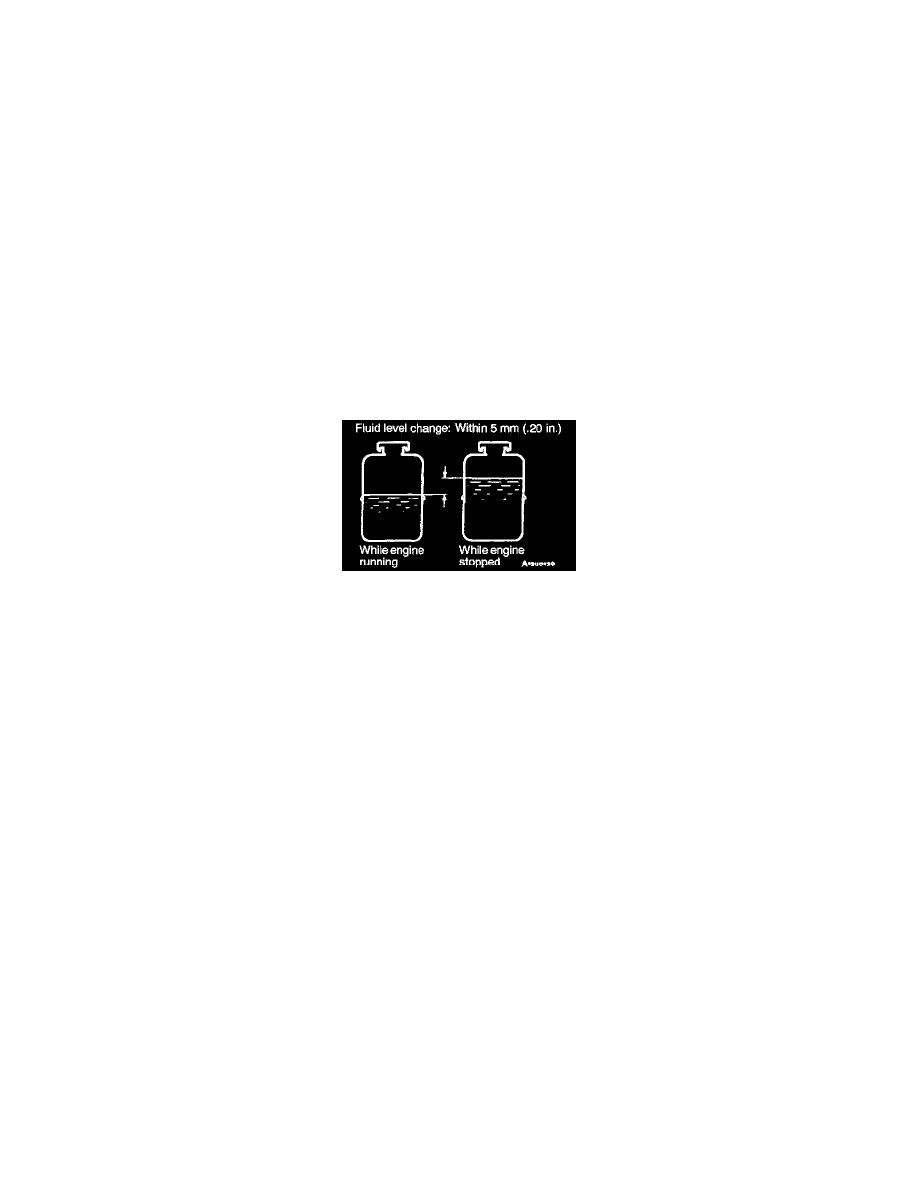Mirage Sedan LS L4-1834cc 1.8L SOHC MFI (1999)

Power Steering Fluid: Service and Repair
Hydraulic System Bleeding
BLEEDING
1. Jack up the front wheels and support them by using a jack stands.
2. Manually turn the oil pump pulley a few times.
3. Turn the steering wheel all the way to the left and to the right five or six times.
4. Disconnect the high-tension cable.
CAUTION: Be careful not to position the high4ension cable near the delivery pipe.
5. While operating the starting motor intermittently, turn the steering wheel all the way to the left and right five or six times (for 15 to 20 seconds).
CAUTION:
1. During air bleeding, replenish the fluid supply so that the level never falls below the lower position of the filler.
2. If air bleeding is done while engine is running, the air will be broken up and absorbed into the fluid; be sure to do the bleeding only while
cranking.
6. Connect the high-tension cable.
7. Turn the steering wheel to the left and right until there are no air bubbles in the oil reservoir.
8. Confirm that the fluid is not milky, and that the level is between the high and low dipstick marks.
9. Confirm that there is very little change in the fluid level when the steering wheel is turned to the left and right.
10. Confirm that the change in the fluid level is no more than 5 mm (0.20 inch) when the engine is stopped and when it is running.
11. If the change of the fluid level is 5 mm (0.20 inch) or more, the air has not been completely bled from the system, and thus must be bled
completely.
CAUTION:
1. If the fluid level rises suddenly after the engine is stopped, the air has not been completely bled.
2. If air bleeding is not complete, there will be abnormal noises from the pump and the flow-control valve, and this condition could cause a
reduce of the life of the power steering component.
